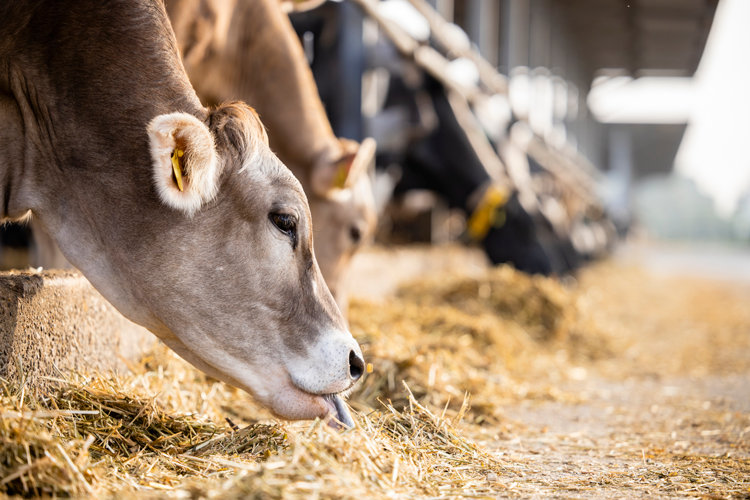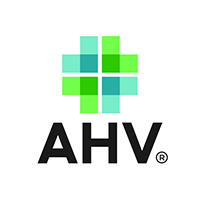
Energy metabolism is a crucial aspect of dairy cow physiology, playing a central role in supporting various physiological functions, milk production, and overall health. The efficient conversion of dietary nutrients into usable energy is essential for meeting the high energy demands of lactating dairy cows. Here are two key points highlighting the importance of energy metabolism in dairy cows: The intake of carbohydrates is the main source of energy for cows, and it is broken down into glucose to be used by the cow for all functions.
Milk Production: Lactating dairy cows have a substantial energy requirement to support milk synthesis. Energy is utilized for the secretion of milk components such as lactose, fat, and protein. Efficient energy metabolism ensures optimal milk production, which is directly linked to the economic viability of dairy farming. The mammary gland of the cow needs 72 grams of glucose to produce 1 kg (2.2 lbs.)1 of milk. That means for a cow producing 100 lbs. of milk per day, she needs 3,270 kg of glucose per day.
Body maintenance and growth: Energy is essential for maintaining basic bodily functions, including maintenance of body temperature, organ function, and overall health. Additionally, energy supports the growth of tissues, particularly in growing heifers and replacement animals.
Reproduction: Energy availability is closely linked to reproductive performance in dairy cows. Adequate energy reserves are necessary for proper estrous cycle regulation, conception, and successful pregnancy. Insufficient energy can lead to disruptions in the reproductive cycle and decreased fertility.
Immune function: A well-functioning immune system is vital for the health of dairy cows. Energy metabolism contributes to the production of immune cells and antibodies, helping cows resist diseases and infections. Cows with compromised energy balance may be more susceptible to health issues. An acutely activated immune system uses more than 1 kg ( 2.2 lbs.) of glucose within 720 minutes and maintaining euglycemia does not rescue milk synthesis2.
Fat mobilization: During periods of negative energy balance, such as early lactation, cows may mobilize body fat reserves to meet energy demands. While this can help sustain milk production, prolonged negative energy balance may lead to health issues, including ketosis and fatty liver syndrome.
Feed efficiency: Efficient energy metabolism is closely linked to feed efficiency. Maximizing the conversion of dietary nutrients into energy helps optimize the use of feed resources, reducing production costs and environmental impact.
Nutrient partitioning: Proper energy metabolism influences the partitioning of nutrients toward milk production rather than fat deposition. This is crucial for maintaining body condition and ensuring that energy is directed towards productive purposes.
Management considerations: Understanding the dynamics of energy metabolism allows dairy farmers to implement effective nutritional management strategies. Balancing the energy content of the diet, especially during critical periods such as transition from dry to lactating, is essential for maintaining cow health and performance.
In summary, energy metabolism is a cornerstone of dairy cow physiology, impacting milk production, reproductive performance, immune function, and overall well-being. Proper management of energy balance through nutrition and husbandry practices is essential for maintaining a profitable and sustainable dairy operation.
References:
1 Abbas Z, Sammad A, Hu L, Fang H, Xu Q, Wang Y. Glucose Metabolism and Dynamics of Facilitative Glucose Transporters (GLUTs) under the Influence of Heat Stress in Dairy Cattle. Metabolites. 2020 Jul 31;10(8):312. doi: 10.3390/metabo10080312. PMID: 32751848; PMCID: PMC7465303.
2 Kvidera SK, Horst EA, Abuajamieh M, Mayorga EJ, Fernandez MV, Baumgard LH. Glucose requirements of an activated immune system in lactating Holstein cows. J Dairy Sci. 2017 Mar;100(3):2360-2374. doi: 10.3168/jds.2016-12001. Epub 2016 Dec 29. PMID: 28041733.
AHV (Animal Health Vision) is a global company that gives #PowerToTheFarmer with science-based solutions to herd health challenges. By proactively addressing bovine health, farmers can maximize production and longevity while avoiding milk and meat withdrawal. AHV provides unique products that can formulate strategic solutions to address udder health, uterine health, calves, and energy and metabolism challenges specific to your dairy. Maximize production and increase herd health with AHV! Visit www.ahvint.com to learn more.



